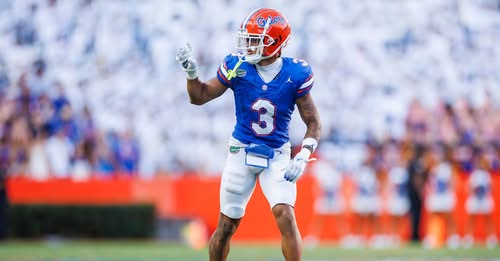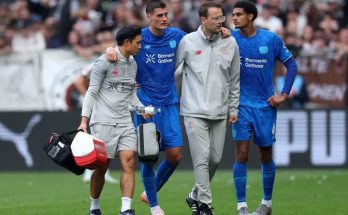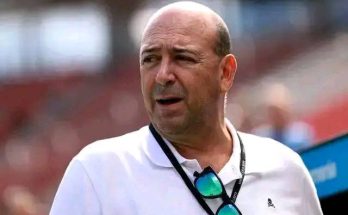The Florida Gators’ offense, once seen as a powerhouse capable of dominating SEC defenses, is facing an unexpected challenge early in the season as a string of what have been labeled “minor” injuries begins to pile up. While none of the injuries have been severe enough to sideline key players for extended periods, the cumulative effect is starting to show on the field. With depth being tested and rhythm disrupted, head coach Billy Napier and his staff are scrambling to keep the unit on track before conference play heats up.
The Gators entered the season with high expectations, particularly on the offensive side of the ball. Quarterback Graham Mertz was poised to build on a solid 2023 campaign, the running back room was considered one of the deepest in the SEC, and the receiving corps, though young, had flashed potential in offseason workouts. However, as the season progresses, nagging injuries have begun to chip away at the unit’s consistency.
It started during fall camp when starting left tackle Austin Barber, a crucial piece of the offensive line, went down with a knee issue. Though the injury wasn’t deemed serious, Barber has been in and out of practice, leaving the offensive line in flux. Without him, the Gators have struggled to establish the same level of protection, leading to increased pressure on Mertz and disrupting the timing of the passing game. Backup Jordan Herman has filled in admirably, but Barber’s absence has been noticeable, particularly in key third-down situations.
The running back room, once a strength, has also been hit by the injury bug. Montrell Johnson Jr., the team’s leading rusher from a year ago, has been dealing with a lingering hamstring issue that has limited his explosiveness. While he hasn’t missed significant time, his burst hasn’t been the same, and the coaching staff has had to manage his snaps carefully. Backup Trevor Etienne, a dynamic playmaker in his own right, has also been banged up, suffering a minor ankle sprain in Week 2. Though Etienne has continued to play, he hasn’t been as elusive as usual, and the Gators’ ground game has suffered as a result.
Perhaps the most concerning development has been the state of the receiving corps. True freshman Eugene Wilson III, one of the most exciting newcomers on the roster, has been hampered by a shoulder injury that has limited his practice reps. Wilson’s speed and route-running ability were expected to add a new dimension to the offense, but without him at full strength, the passing attack has lacked a consistent deep threat. Veteran Ricky Pearsall has stepped up as Mertz’s primary target, but defenses have begun keying in on him, knowing that the Gators don’t have another proven playmaker stretching the field.
Even Mertz himself hasn’t been completely immune. While he hasn’t suffered any major injuries, he has been playing through soreness after taking several big hits in the early weeks. His toughness hasn’t been questioned, but his mobility in the pocket has been slightly affected, leading to a few uncharacteristic missed throws. With the offensive line still finding its footing, Mertz has been forced to get the ball out quicker than he’d like, which has disrupted some of the offense’s timing-based concepts.
The coaching staff has downplayed the significance of these injuries, referring to them as “minor bumps in the road,” but the on-field product suggests otherwise. The Gators’ offense, which was expected to be one of the most explosive in the conference, has looked out of sync at times. Red zone efficiency has dipped, third-down conversion rates have fallen, and the big-play ability that was supposed to define this unit has been inconsistent.
Napier has emphasized the “next man up” mentality, and several backups have had to step into larger roles. True freshman wide receiver Andy Jean has seen increased snaps in Wilson’s absence, and while he’s shown flashes, his inexperience has been evident in route running and blocking assignments. Running back Treyaun Webb, another freshman, has been thrust into more carries than anticipated, and though he’s run hard, he’s still adjusting to the speed of SEC defenses.
The silver lining is that none of these injuries appear to be long-term. Barber is expected to return to full strength soon, Johnson’s hamstring is improving, and Wilson’s shoulder issue isn’t considered serious. However, in a season where every game matters, even short-term absences can have major consequences. The Gators have managed to stay afloat in the early going, but with SEC play looming, they’ll need their key playmakers at full strength to compete against the likes of Georgia, Tennessee, and LSU.
The bigger concern may be the lack of proven depth at certain positions. While the Gators have recruited well under Napier, the reality is that many of the backups are young and still developing. In a perfect world, these “minor” injuries would be nothing more than opportunities for younger players to gain experience. But in the cutthroat SEC, where margins for error are razor-thin, even small setbacks can derail a season.
As the Gators prepare for their upcoming slate of games, the focus will be on getting healthy while also finding ways to maximize production with the available personnel. Napier and his staff may need to simplify the playbook slightly to account for the injuries, leaning more on quick passes and a power running game to keep the offense on schedule. Defenses will undoubtedly test Florida’s depth, forcing the backups to prove they can handle the spotlight.
For now, the Gators’ offense remains a work in progress. The talent is there, and if the injured players can return to full strength soon, this could still be one of the most dangerous units in the SEC. But if the “minor” injuries continue to stack up, what was once a promising season could quickly turn into a struggle for survival. The next few weeks will be critical in determining whether Florida’s offense can overcome these early setbacks or if the injury bug will prove to be more than just a minor inconvenience.



